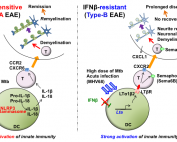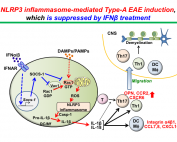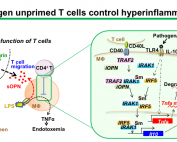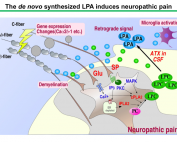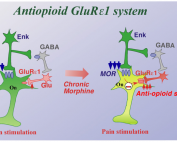PI PREVIOUS STUDIES
New drug candidate for Multiple Sclerosis patients
Mechanisms of IFN beta-sensitive and resistant EAERecently, we identified new drug candidates for multiple sclerosis (MS) patients who do not respond treatment of interferon β (IFNβ), which has been a first-line treatment to MS patients for over 15 years. The study was published in the journal Nature Neuroscience (Inoue et [...]
Molecular mechanisms involving development of MS heterogeneity using EAE
We study molecular mechanisms that induce heterogeneity in multiple sclerosis (MS) pathology in an effort to provide new molecular targets for the identification of biomarkers able to predict treatment outcome of therapy with interferon β (IFNβ), a well-known, first-line treatment of MS. As such, this may allow development of [...]
T cells control hyperinflammation in innate immunity during acute infection model.
Innate immunity has a protective role against pathogen infection in very early stages of infection. However, prolonged activation of innate immunity leads to hyperinflammation, which induces collateral damage of host tissues. We have demonstrated that antigen-unprimed T cells control hyperinflamamtion in innate immunity. This is new, because T cells [...]
Identification of initiator for neuropathic pain
Treating neuropathic pain is indeed challenging. Frequent, intractable chronic pain affects ~ 1% of the U.S. population, and thus needs further study. The etiology of neuropathic pain is diverse, ranging from trauma to infections to cancer. One circumstance that makes current treatment of neuropathic pain less-than-effective is that the [...]
Molecular mechanisms on opioid addiction/tolerance and anti-opioid system
Tolerance, physical dependence, and addiction caused by chronic treatment with narcotics are important models in the study of basic neuronal plasticity. In our work, we have identified several critical molecules and pathways that are relevant to the development of peripheral and central tolerance and addiction (J.Neurosci. 2000; J. Pharmacol. [...]
In vivo signal transduction on pain and analgesia
We developed a novel behavioral test to evaluate in vivo function of nociceptors, which detect endogenous nociceptive/pain molecules in the primary afferent sensory fibers. The test using mice is sensitive enough to evaluate extremely low doses of pain inducers (PNAS 1998; J. Pharmacol. Exp. Ther. 1999, 2001, 2003; Br. [...]

